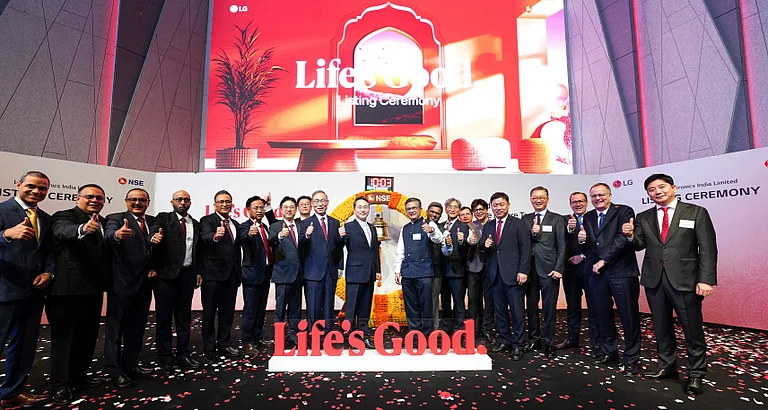The story of the Indian automobile sector began in 1957 when the iconic Hindustan Motors rolled out its cult HM Ambassador car from its Hooghly plant in Kolkata. Since then, the industry has not looked back. While there has been a rise in the number of Indian automakers with the likes of Maruti, Tata and Mahindra & Mahindra dominating the space, several global brands like Honda, Nissan, Toyota and Hyundai, among others, have also set up their manufacturing plants in the country to make cars for the domestic as well as international market.
However, the industry, which had a negative CAGR growth of 1.11 per cent between 2010-11 and 2020-21, has started the new decade on a bleak note. (See Chart 1).
Despite witnessing a rise in demand from customers, Maruti, the country’s largest carmaker with close to 50 per cent market share, reported a 46 per cent drop in sales in September this year. Maruti’s plants are working at a suboptimal level due to a shortage of semiconductors in the country. The situation is more or less the same with other carmakers as well and nobody knows if the situation will change anytime soon.
India meets almost all of its semiconductor demand through imports. Currently, Taiwan and China control the entire semiconductor supply chain. What is bad news for Indian automakers is that by 2030, semiconductors would account for almost 50 per cent of a car’s cost. (See chart 2)

Can India Overcome Semiconductor Shortage?
The Centre has announced a Rs 760-million production-linked incentive (PLI) scheme to make India a hub for semiconductor manufacturing. If things go as per the plan, India will be an important part of the global supply chain of semiconductors. The industry has welcomed the scheme which promotes building the entire semiconductor ecosystem, including design, manufacturing, assembly and packaging. Big conglomerates like the Tatas and Reliance Industries have shown interest in making semiconductors in India. Global chipmakers are likely to make a beeline as well.
“The Centre is taking steps in the right direction by introducing a PLI which will be beneficial from a long-term perspective and the availability will improve over a period of time,” says Hemal Thakkar, Director, CRISIL Research.

In 2007, Intel had shown interest in setting up its manufacturing unit in India. However, the American semiconductor maker ended up choosing China and Vietnam due to better incentives offered by those countries. In 2013, too, plans by Jaypee and Hindustan Semiconductor Manufacturing Corporation failed to take off. Pranay Kotasthane, Deputy Director, Takshashila Institution, pins the reason for the failure of past government schemes on lack of investor confidence. “It takes at least five years to set up one semiconductor fab unit. Unless the investors have complete confidence in the business, trade, and tax regimes of the country and the assurance that there would be no protectionism to promote domestic players over foreing players, they will not invest capital. India must avoid becoming protectionist if it wants to attract global chipmakers to India,” he says. In the previous decade, global investors were peeved about the fact that India introduced retrospective tax laws and cancelled the licence of telecom players overnight, giving advantage to Indian telecom firms.
Even if the Centre convinces global semiconductor companies to manufacture in India, there would remain a challenge that it can’t handle on its own. Semiconductor fabs are water and electricity guzzlers. In India, both of them fall under the jurisdiction of state governments and are in short supply due to infrastructure issues. With the pressure of clean water becoming scarce, India would find it challenging to provide water to an industry that faces criticism across the world for causing water shortages in the vicinity of their operations.
The Cleantech Dilemma
Indian automakers have invested billions of dollars to transition from Bharat-IV to Bharat-VI emission standards in the previous decade. A significant amount of revenue was lost on account of distress sales of unsold Bharat-IV-standard cars, which had lost consumer interest in the wake of new emission norms. Automakers are now required to invest in electric vehicles to help India meet its COP26 emission targets. EVs, however, are unaffordable for a large section of Indian consumers.
Then there are issues related to bottlenecks with respect to the EV charging infrastructure as well. The biggest challenge in developing an EV ecosystem, however, is the dependence on China for sourcing lithium for EV batteries. According to BloombergNEF, the dragon nation controls 80 per cent of the world’s lithium refining and 77 per cent of the world’s cell capacity. This means that in future, in case of a geopolitical tension between India and China, the former’s automobile industry could become one of the casualties.
The price of lithium has spiked by 400 per cent in the last financial year and global agencies have revised their forecast further. Bank of America, in a report, said that it expects the global battery shortage to grow further between 2026 and 2030 due to a continued rise in EV penetration across markets.
These fears have divided the industry as well as the policymakers. While companies like Hyundai, Tata and Mahindra & Mahindra, have successfully lobbied for EVs to be taxed at 5 per cent GST as against 43 per cent for other cars, Maruti, which is investing in hybrid technology, wants a level playing field from the government.
In this battle of survival, each company is hoping to live at the cost of the other. It is not difficult to understand the rift within an industry which has stuck together for many decades. “One of the biggest challenges for the automakers is the rapid evolution of technology. One has to start investing in a technology two-three years before production can start. In that time, if the technology changes, the investment may become suboptimal. For example, if you put up a lithium-ion battery plant and three years later, sodium-ion batteries become more technologically viable, your investment is at risk,” says Anurag Singh, Managing Director, Primus Partners.
Sugato Sen, Former Deputy Director General, Society of Indian Automobile Manufacturers, explains the risks associated with promoting just one technology by the government. “As a country, we need to see which technology will be more affordable for people. Across the world, EVs are being sold with the help of government subsidies. In countries like China, when the subsidy was withdrawn, the sales tanked and the government had to resume the subsidy. Should India be trying to support the sale of EVs, which require lithium-ion batteries, through subsidies? According to me, we should rather wait for fuel cell technology to evolve and until then, the government can be technology agnostic in promoting clean technology.”
What Could Be The Cost of Wrong Bets?
The automobile sector accounts for 7.3 per cent of India’s GDP and employs 38 million people. But, over the last few years, global brands like Ford and General Motors have exited India citing lack of demand for their products. Many blame those companies for failing to come up with India-centric products.
But, if India wants to increase the share of manufacturing in its GDP, then providing a stable policy regime is important. Gaurav Vangaal, Associate Director, IHS Markit, points out the issue of the rising cost of cars in India due to investments in new technologies. “Any investment made by the auto industry will be transferred only to the consumer in the shape of a price hike. Hence, the price hike is expected to continue and price-sensitive and value-conscious Indian consumers will define the uncertainty or certainty of the Indian market,” he says



























